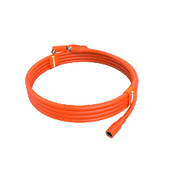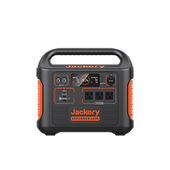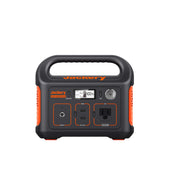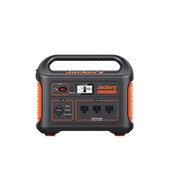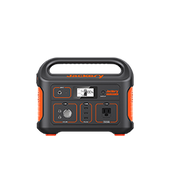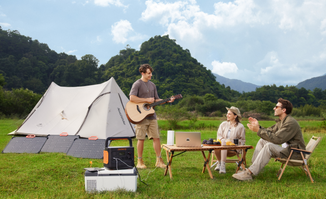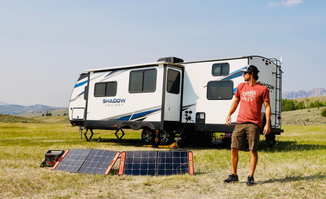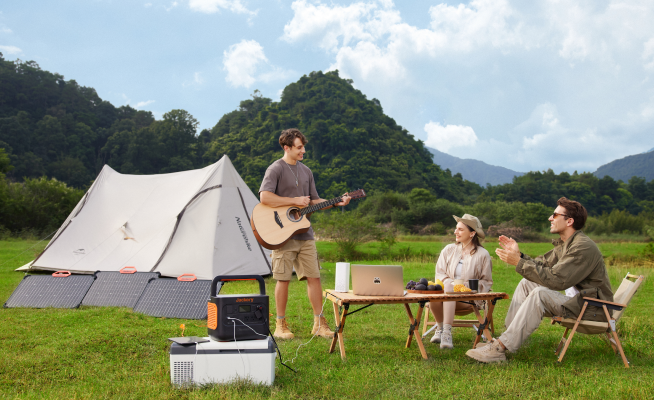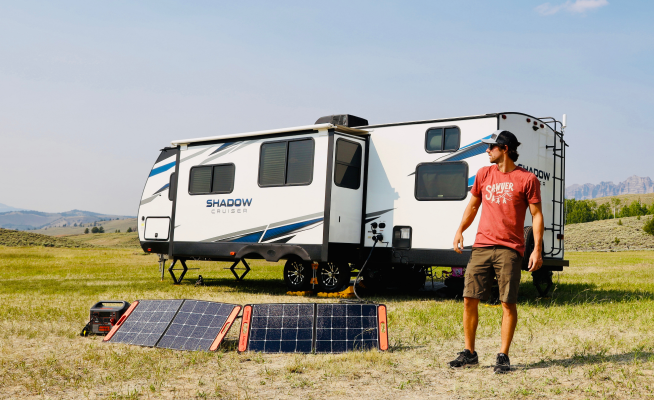From Campfires to Generators: A Modern Approach to Camping Power
Imagine taking a camping trip to one of the best Canadian camping sites, far away from the hustle and bustle of modern life. The company of your friends and family keeps you entertained and makes the trip memorable. But then, as the night deepens and your devices start running out of power, you start looking for different power sources. These can be traditional sources like gas generators and campfires or eco-friendly options like solar generators or camping power banks.
Traditional methods may have their charm, but they usually fall short when it comes to satisfying your power-hungry devices. In contrast, eco-friendly power sources like solar generators utilize the sun’s energy - which is renewable and widely available. This means you will never fall short of power and can have an exciting camping experience without losing contact with the digital world. So, let’s explore the possibilities that lie beyond the campfire and discover a new era of camping power!

Traditional Sources of Power Camping Activities
According to the Canadian Recreational Vehicle Association, around 33% of campers have been camping their whole life. Some traditional power sources many campers have used for a long are:
Campfire
The concept of campfire goes 1.6 million years back, when Australopithecus robustus and Homo erectus built campfires. And now it’s part of almost every camping trip for centuries! Campfire is the most beautiful thing about camping as it provides you warmth, light, and a chance to share stories while sitting around. But surprisingly, it also serves as a source of power for your camping activities.
You can use the campfire for cooking by using a cast iron skillet or grill grate directly over the open flames. Boiling water on it is also great as you can easily prepare coffee, tea or use the water for other purposes like washing your dishes or bathing. Also, place torches or lanterns around the campfire to get additional lighting during the night. However, there are certain disadvantages associated with campfires:
- Deplete local firewood supplies, impacting future campers and the environment.
- Smoke can decrease air quality and cause respiratory discomfort for campers and nearby communities.
- It can lead to devastating wildfires, causing widespread damage and endangering lives.
Gas Generators
The gas generator we have today evolved from the work of Micheal Faraday and Joseph Henry in the 1830s. After that, engineers and inventors like Nikolaus Otto, Rudolf Diesel, and Karl Benz played crucial roles in refining combustion engines. These engines used a mixture of fuel and air ignited by a spark to produce mechanical power - laying the foundation of gas generators.
Gas generators are a common and convenient option for powering camping activities. These portable generators run on gasoline and provide a reliable source of electricity for various needs while camping. With a gas generator, you can provide power to essential appliances like camping stoves, refrigerators, and fans or even charge electronic devices like smartphones and laptops.
They also feature multiple outlets, allowing you to connect multiple devices simultaneously. They offer a higher power output than traditional methods, making them suitable for running larger devices or appliances requiring more energy. But there are certain disadvantages, such as:
- Emit toxic greenhouse gases and contribute to air pollution.
- Dependence on non-renewable fossil fuels.
- Noise and odor during operation.
- Regular maintenance requirements.
- Fuel storage and availability challenges.
- High fuel costs and risk of carbon monoxide poisoning.
All in all, both campfires and gas generators negatively impact the environment. They also offer very limited power; you cannot run necessary appliances once you run out of wood or fuel. This ruins your camping experience and may keep you away from the digital world.
Some Eco-Friendly Power Options for Camping Activities
Camping power banks, solar generators, etc., are some of the most reliable and eco-friendly power options.
1. Camping Power Bank
A camping power bank is a portable device that stores electrical energy. It typically has a lithium battery that stores electricity and generates AC or DC power. These last around 1.5 to 3.5 years or 600 to 1000 full charge cycles. You can utilize these camping power banks to charge or power small electronic devices such as smartphones, tablets, and portable speakers.
They often feature a USB port or multiple ports for connecting various devices. You should charge your power bank fully before heeding the camping site. Once you reach the camping site, you can connect your devices to the power bank - when they run out of power - using the appropriate charging cables. This allows you to recharge your devices without needing a conventional power source.
2. Solar Generators
Solar generators take the sun’s power to generate electricity and consist of solar panels. These panels transform the captured solar energy into electrical energy, which is then kept in a battery. These generators offer a sustainable and renewable source of electricity, making them an environmentally beneficial choice for camping.
In order to use a solar generator, you must set up the solar panels in an area with good sun exposure. The panels typically absorb sunlight and convert it into electricity. This electricity is used to charge devices or directly power small appliances, such as coffee makers, hovens, etc. Some solar generators also have built-in outlets and USB ports for easy device connection.
3. Portable Power Station
A portable power station is a unit having a battery, inverter, and outlets in a single device. It provides a larger and more reliable power source compared to a camping power bank. Typically, a portable power station for camping resembles a lot of camp solar generators. However, there’s one key difference: power stations only store electricity, while solar generators also produce it using solar panels.
Portable power stations also have multiple outlets, USB ports, and even DC ports, allowing you to power various devices and appliances during your camping activities. They can be charged in advance using a wall outlet or, in some cases, solar panels and then used to provide electricity to your camping gear as needed.
Best Portable Power Station Options for Your Camping Adventures
Jackery Explorer 500 Portable Power Station
Jackery Explorer 500 Portable Power Station is a reliable, compact power solution for outdoor enthusiasts, campers, and emergencies. With its high-capacity Lithium-ion battery of 518Wh, you can charge and run multiple devices simultaneously without worrying about power depletion. From smartphones and laptops to mini fridges, this power station has you covered.
Portability is a key feature of the Jackery Explorer 500, weighing just 13.31 lbs (6 kg) and equipped with a convenient handle for easy transportation. Its versatility is further enhanced by a range of output options, including an AC outlet, three USB-A ports, two D-C ports, and a Car Port. The AC outlet offers 500 watts of continuous power, extendable up to 1000 watts, suitable for running small appliances and powering electronic devices.
9 key features of the Jackery Explorer 500 Power Station:
- Operates quietly with a noise level of only 37.9dB
- Boasts a powerful capacity of 518 Wh (with a 1000W surge peak)
- Lightweight design, weighing just 13.3lbs (6kg)
- Provides a stable power supply with pure sine wave output
- Suitable for a wide range of temperatures, from 14 - 104F (-10 - 40℃)
- The intelligent Battery Management System ensures a consistent power supply to your devices
- Offers three convenient charging options: solar panels, AC adapters, and car adapters
- Rapid recharge time of only 2 hours
- Multiple output ports for simultaneous charging of up to 7 devices: 1 x AC Output, 3 x USB-A Output, 2x DC Output, and 1x Car Port

Jackery Explorer 1000 Pro Portable Power Station
The Jackery Explorer 1000 Pro Power Station is a versatile solar charging solution that supports a wide range of appliances, from mobile phones to refrigerators and pumps. Its exclusive recharging algorithm ensures that even after 1000 charging cycles, the battery retains 80% capacity, allowing for 10 years of weekly camping trips before reaching the 80% maximum capacity level. With a standby time of over 365 days at 100% capacity, it is a reliable emergency backup power supply.
Featuring intelligent BMS technology, the power station offers 12 levels of protection against overvoltages, high temperatures, short circuits, and more. Its pure sine wave inverter provides stable power to safeguard your devices. Constructed with high-quality 94V-0 fireproof material, the compact machine weighs just 25.4 lbs, making it approximately 70% lighter and smaller than other power stations with similar capacity. It is designed with an ergonomic handle and is easy to carry during camping, fishing, and outdoor activities.
9 key features of the Jackery Explorer 1000 Pro Power Station:
- Fully charges in 1.5 hours
- Supported by a 5-year warranty
- Delivers a pure sine wave output
- High-powered with a 1000W Output (2000W Surge)
- Operates efficiently in a wide temperature range of 14-104F (-10-40℃)
- Simultaneously charges 8 devices through various output ports
- Incorporates an advanced battery management system (BMS) for optimal performance
- Offers multiple charging options: solar panels, AC wall outlets, and car DC ports
- Portable and lightweight, weighing 25.4 lbs, with a lifespan of 10 years and 1000 cycles to 80%+ capacity

Benefits of Using These Eco-Friendly Power Options for Camping Activities
Using eco-friendly power options for camping activities offers several benefits:
1. Cost-effective
Well, the initial investment in eco-friendly power options may seem higher compared to traditional generators. They help you save bucks in the long run. You won’t need to purchase gasoline or fuel regularly - a very expensive option, especially in remote camping areas. You can significantly reduce your camping-related expenses by harnessing free and abundant energy from the sun or wind.
2. Environmental Preservation
When you opt for eco-friendly power options (camping power bank, power station, solar generator), you actively contribute to preserving the environment. Traditional power sources - such as gas generators or campfires - can have detrimental effects on wildlife habitats and natural ecosystems. Choosing sustainable alternatives minimizes these negative impacts and helps protect the natural beauty of camping locations for future generations to enjoy.
3. Portability and Convenience
A camping power bank, power station, or solar generator is compact and portable. So, you can quickly carry them to your campsite. All these are also lightweight and often come with built-in handles or wheels for convenient transportation. This portability lets you power your camping essentials, such as lights, fans, smartphones, and small appliances, wherever you go.
4. Unlimited Energy Supply
One of the many compelling benefits of using eco-friendly power options for camping activities is the potential for an unlimited energy supply. Unlike traditional generators that rely on finite fuel sources, eco-friendly power options tap into renewable energy. These include wind power, which is virtually limitless.
For instance, solar generators use the sun’s energy through solar panels - converting it into electricity that can be easily stored in batteries for later use. This says that as long as the sun is up, you have access to a continuous and sustainable source of power.
Modern Power Solutions Vs. Traditional Power Solutions
Following are the factors that help you understand which power option is better for you:
1. Portability
Modern power solutions, such as a camping power bank, are the most portable option due to their small size and lightweight design. Power stations and solar generators are relatively bulkier and heavier but come with handles or wheels, which also make them portable.
On the other hand, traditional power sources like gas generators are heavy and bulky, making them less portable. Campfires also require gathering firewood, which can be bulky and inconvenient.
2. Noise and Emissions
A camping power bank, power station, and solar generator operates quietly and produces no emissions. This makes them environmentally friendly and suitable for noise-sensitive camping areas. In contrast, gas generators generate noise and emit exhaust fumes - making them disruptive and environmentally unfriendly.
3. Fuel Sources and Availability
Modern power solutions like camping power banks, solar generators, etc., rely on stored electrical or solar energy. They can be recharged using solar panels, wall outlets, or car adapters. This means they do not require traditional fuel sources and are not limited by availability.
While traditional power sources such as gas generators depend on gasoline or propane for fuel. These are non-renewable and need to be refueled regularly. This may require planning and additional storage, along with high fuel costs.

A reliable power source is required on camping sites to ensure you have all the devices running. Multiple power options are available, like traditional ones (gas generators or campfires) or modern ones (camping power banks, solar generators, etc.). You should go with a modern power solution to ensure you don’t contribute to environmental degradation. Moreover, these stylish and eco-friendly solutions help you in long-term savings.
So, if you want an eco-friendly power source for your next camping trip, Jackery has got your back. We have successfully filed 295 patents worldwide for portable power stations and solar generators. Our products are top-notch and affordable, which makes them a must-have! Get in touch and embrace sustainability on your next tour!
Disclaimer:
The runtime mentioned for appliances powered by Jackery is for reference only. Actual runtime may vary under different conditions. Please refer to real-world performance for accurate results.






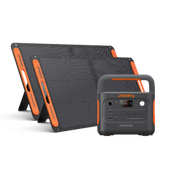


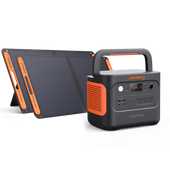

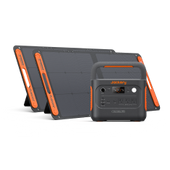
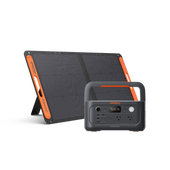
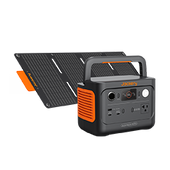
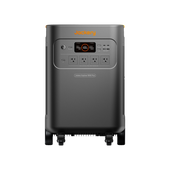
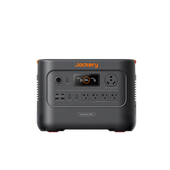
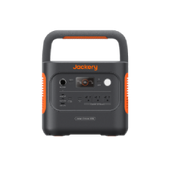
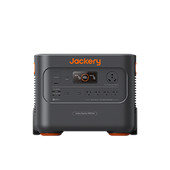
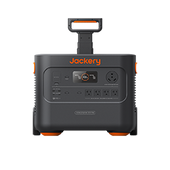

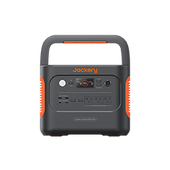
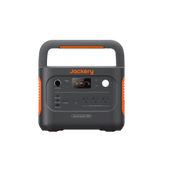
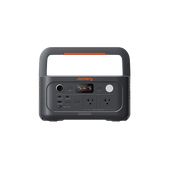

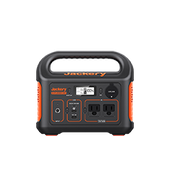
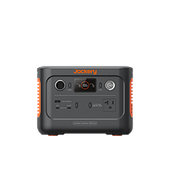
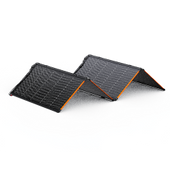
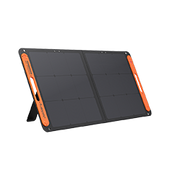


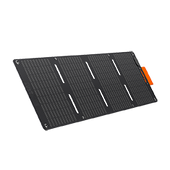
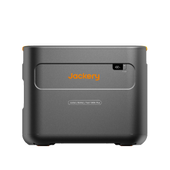
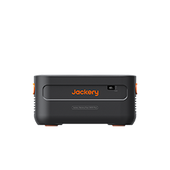
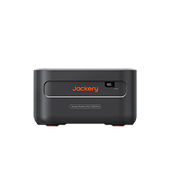
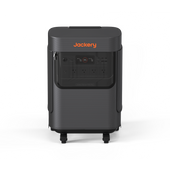
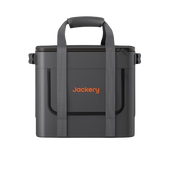


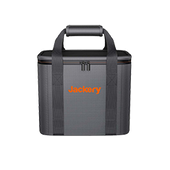
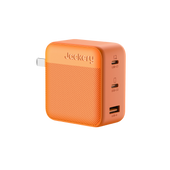
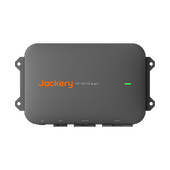
![[Add-on] Jackery Manual Transfer Switch for Explorer 5000 Plus](http://ca.jackery.com/cdn/shop/files/add-on-jackery-manual-transfer-switch-for-5000-plus-240V.webp?v=1757043692&width=170)
